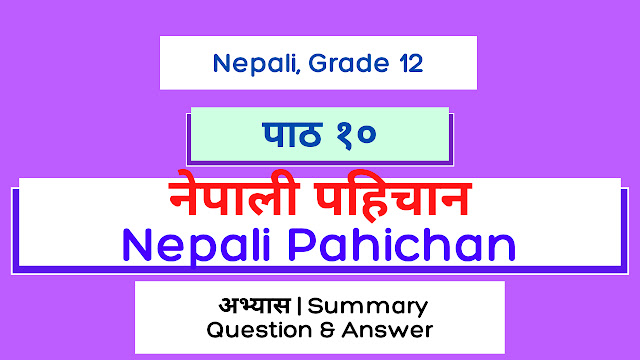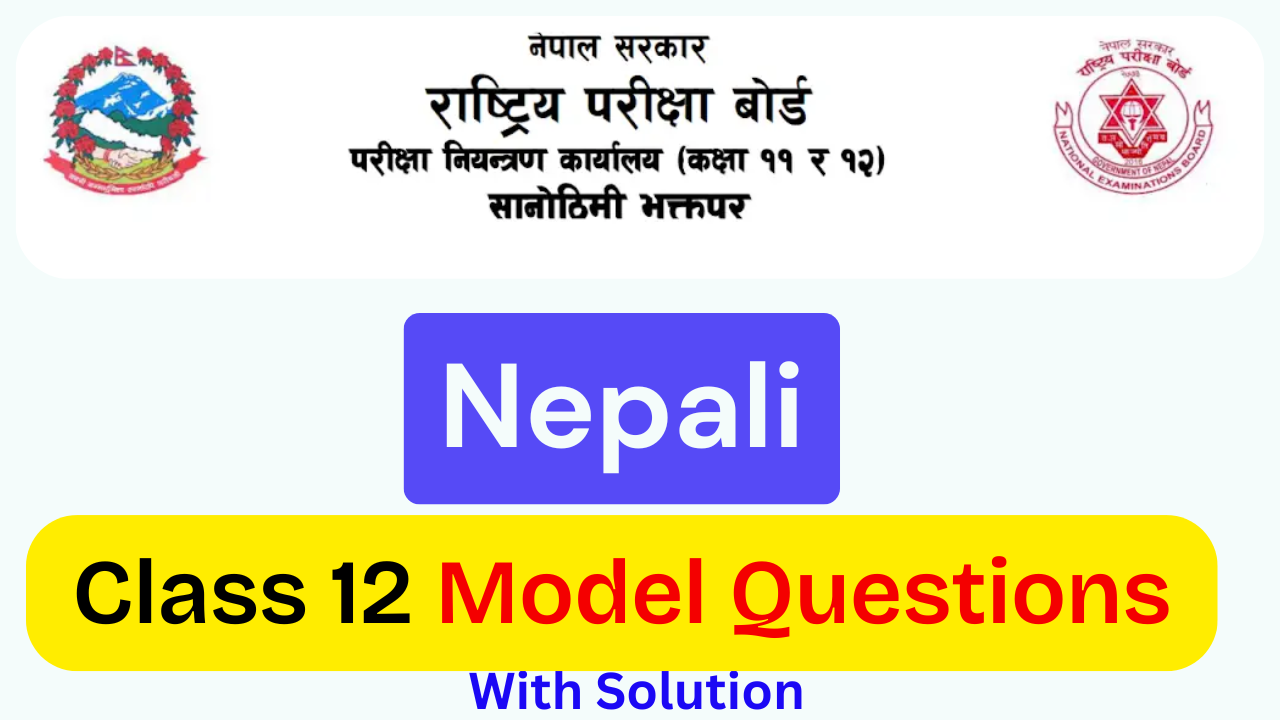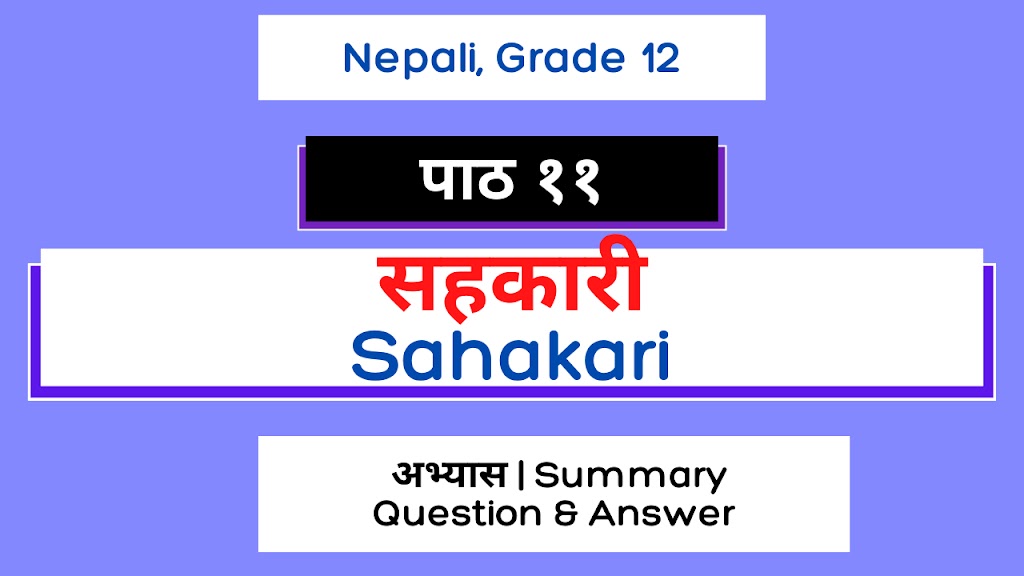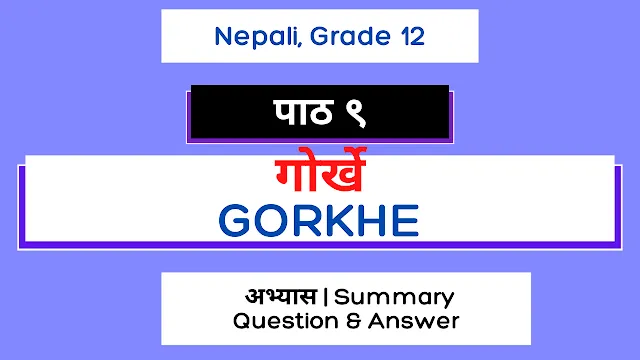Chapter 10: Nepali Pahichan
In lesson Nepali Pahichan, We get to know The condition of Nepali society is concerning since the country’s natural variety in language, religion, and culture would hamper its progress.
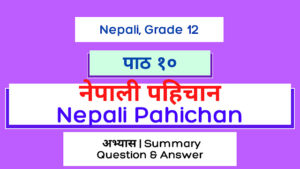 |
| Unit 10: Nepali Pahichan |
Class 12 Nepali Guide 2080: Chapter 10 Nepali Pahichan Exercise, Question Answer Solution guide, Grammar Solution with summary at last.
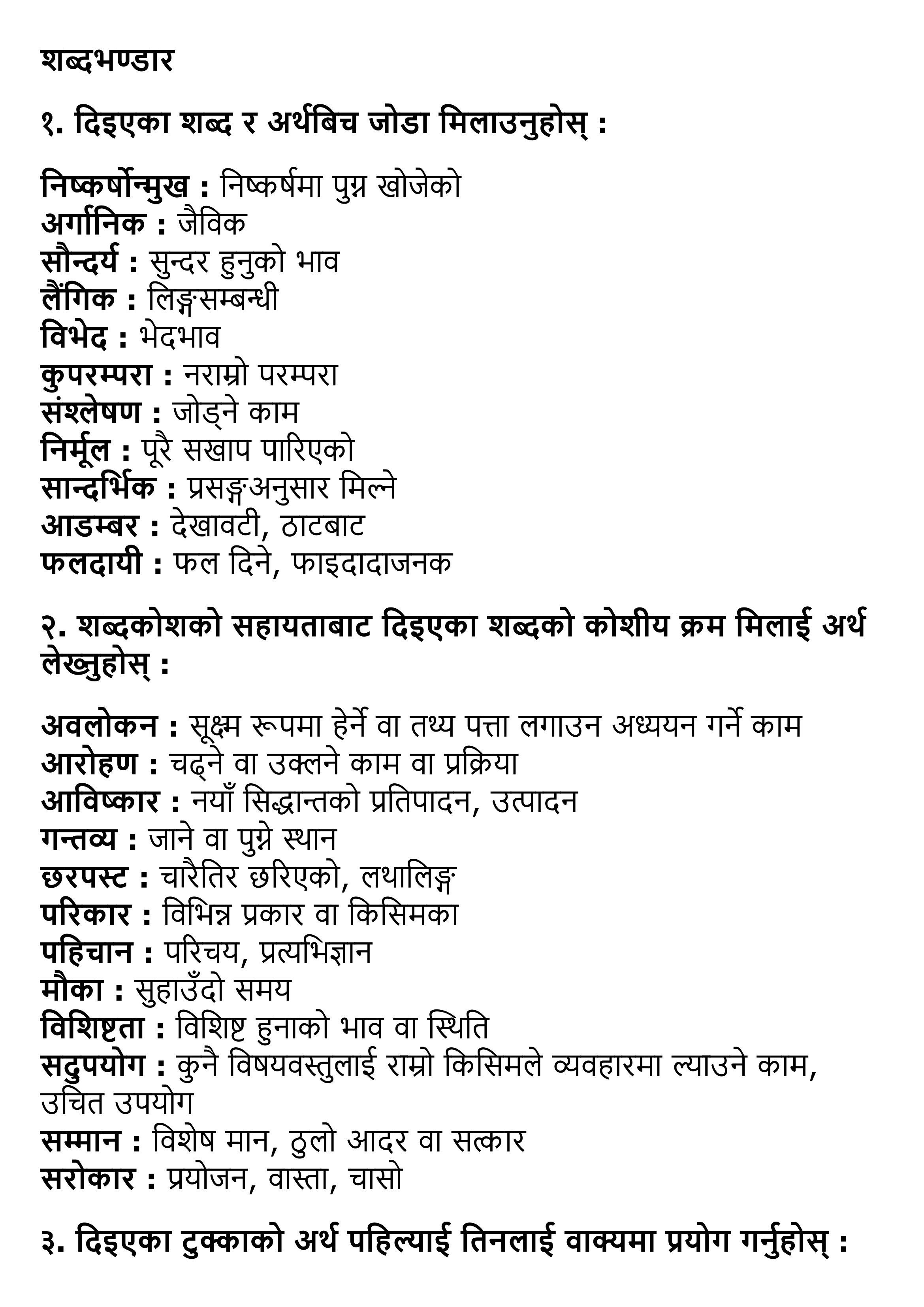
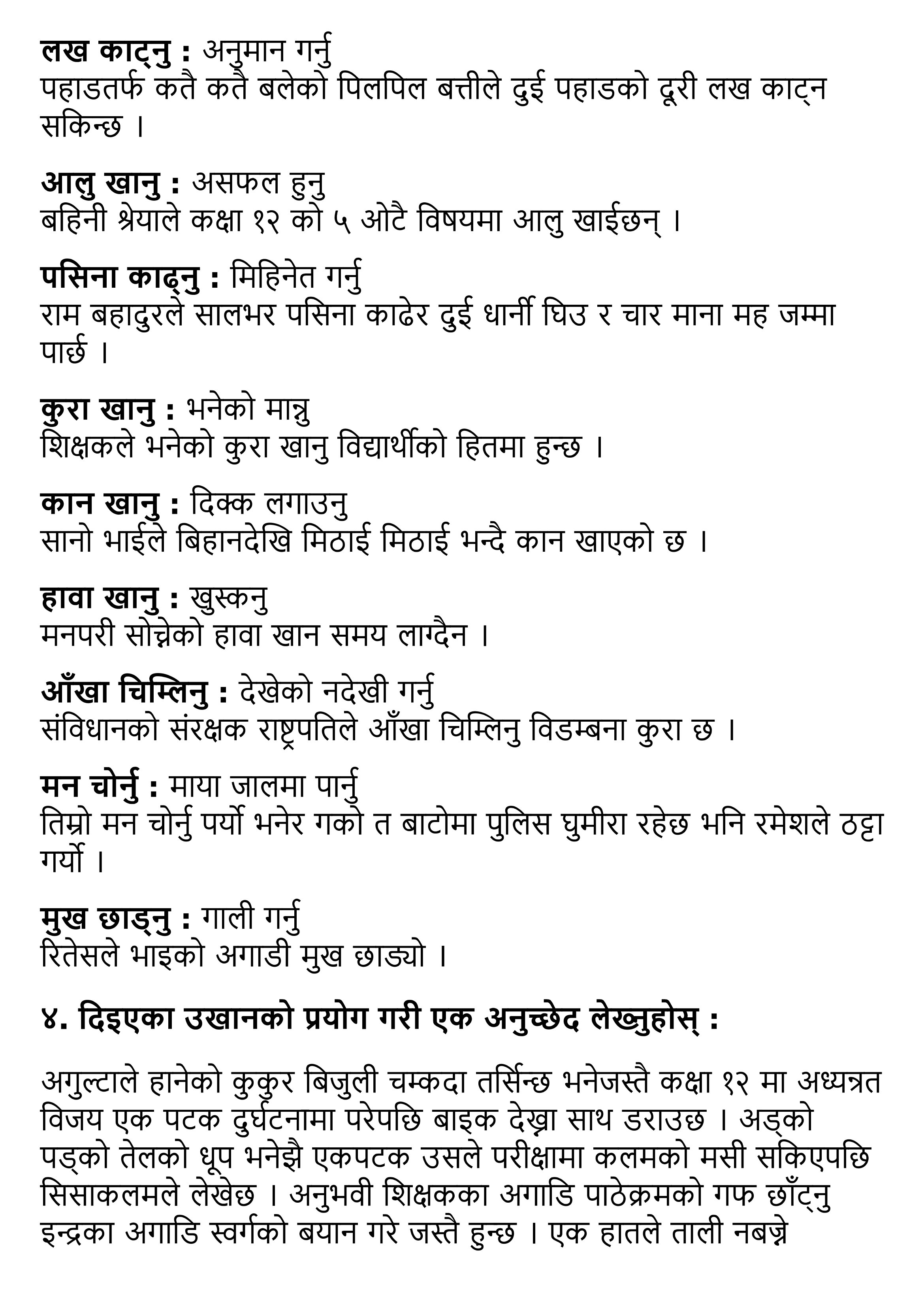
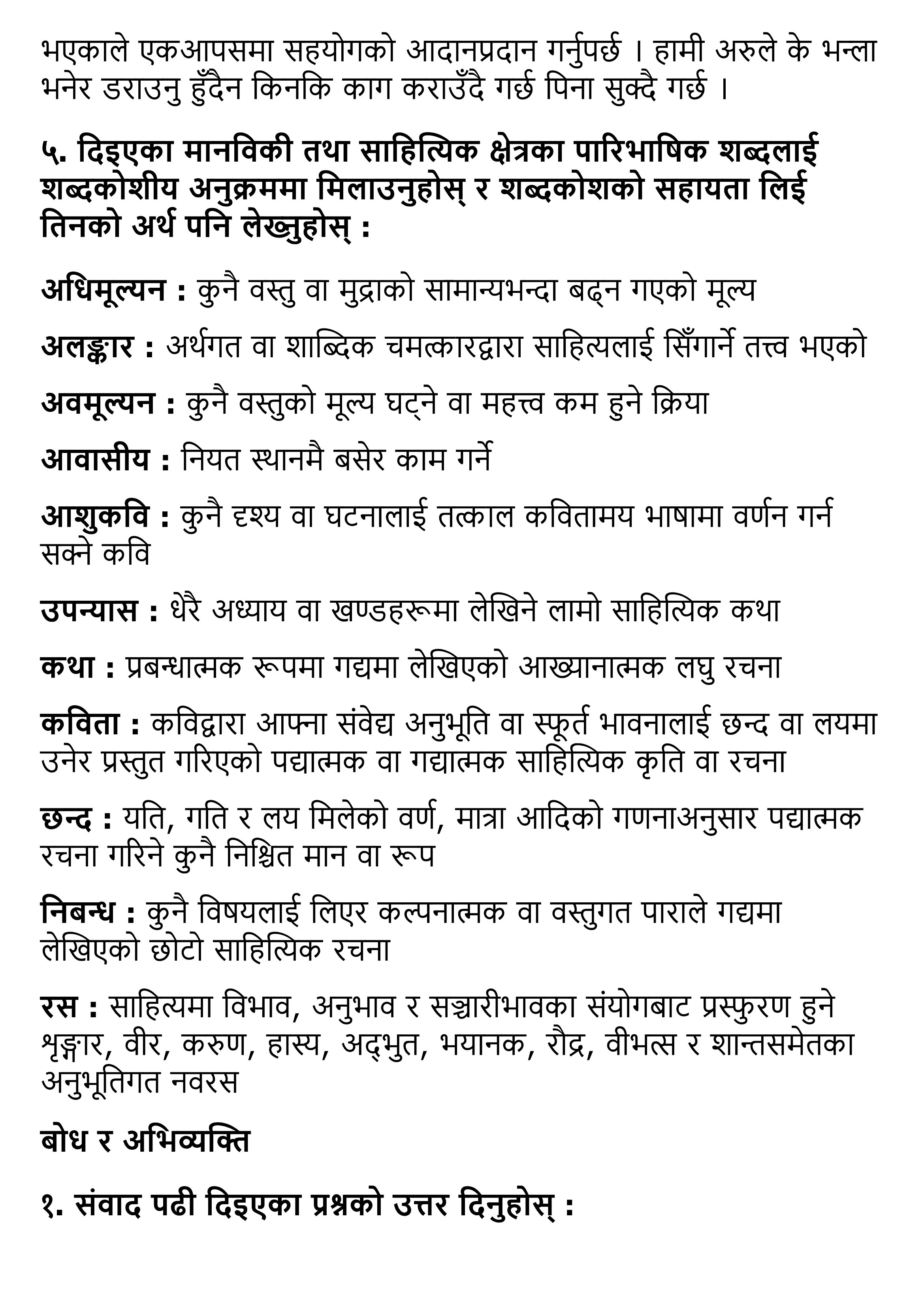
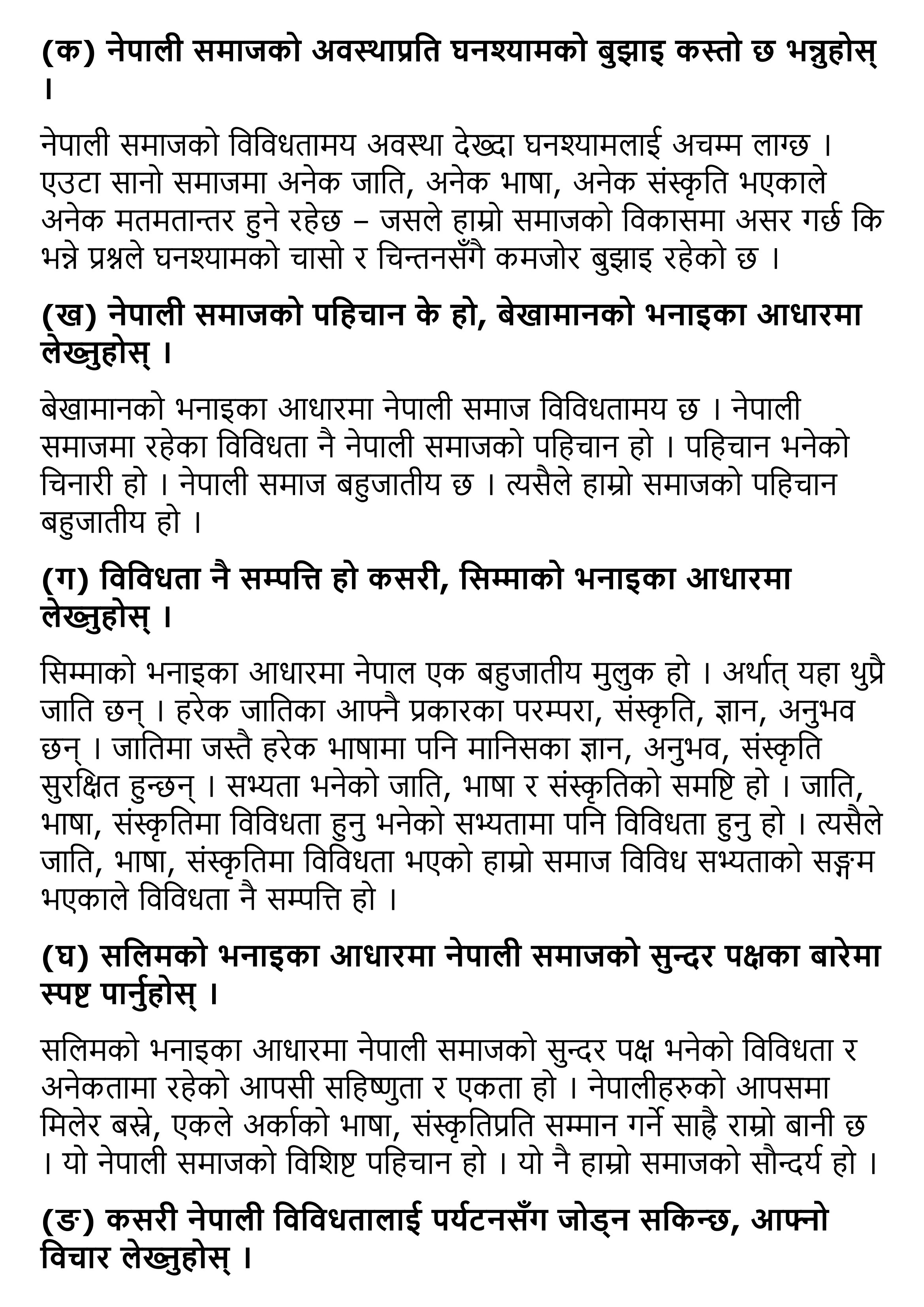

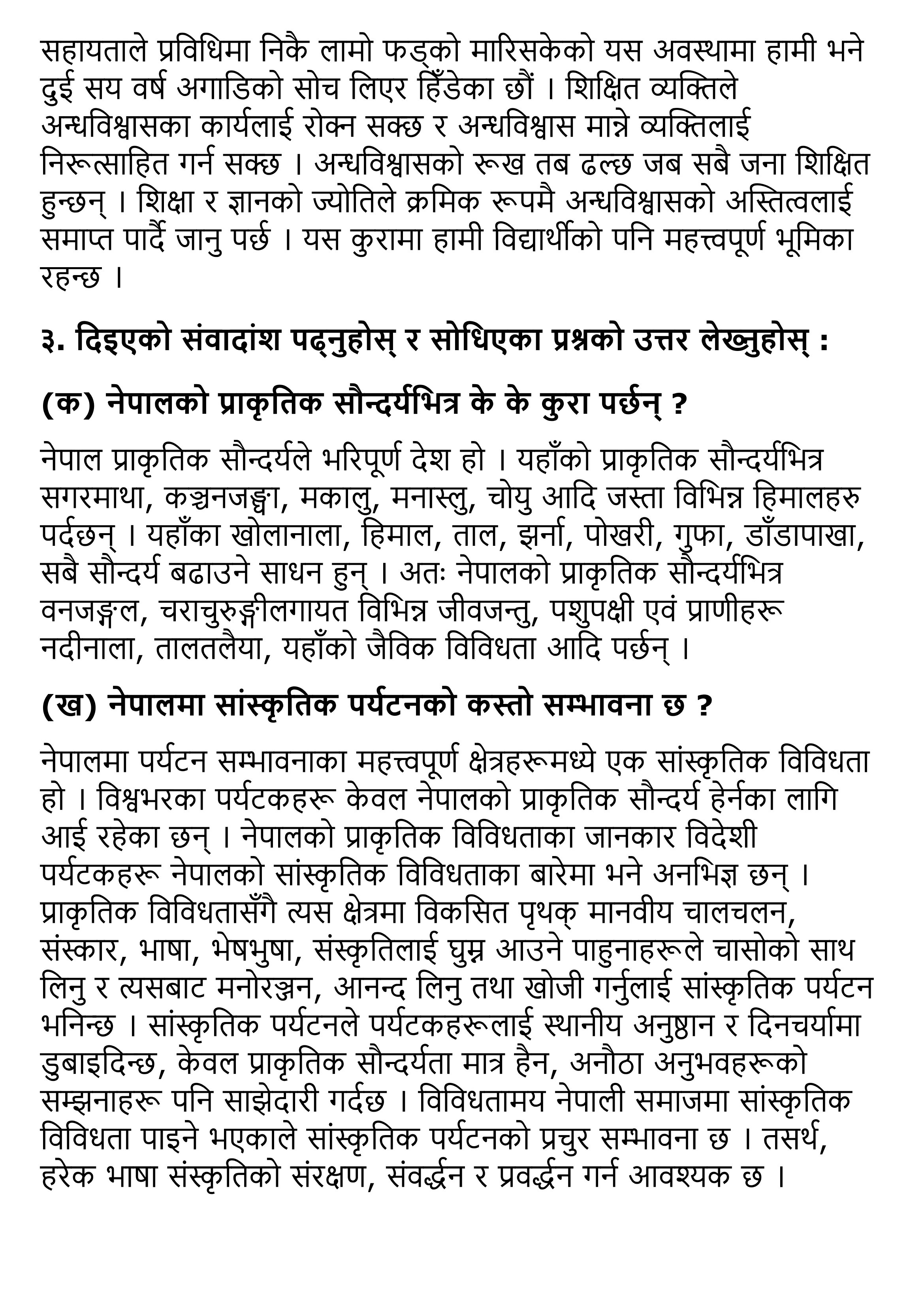
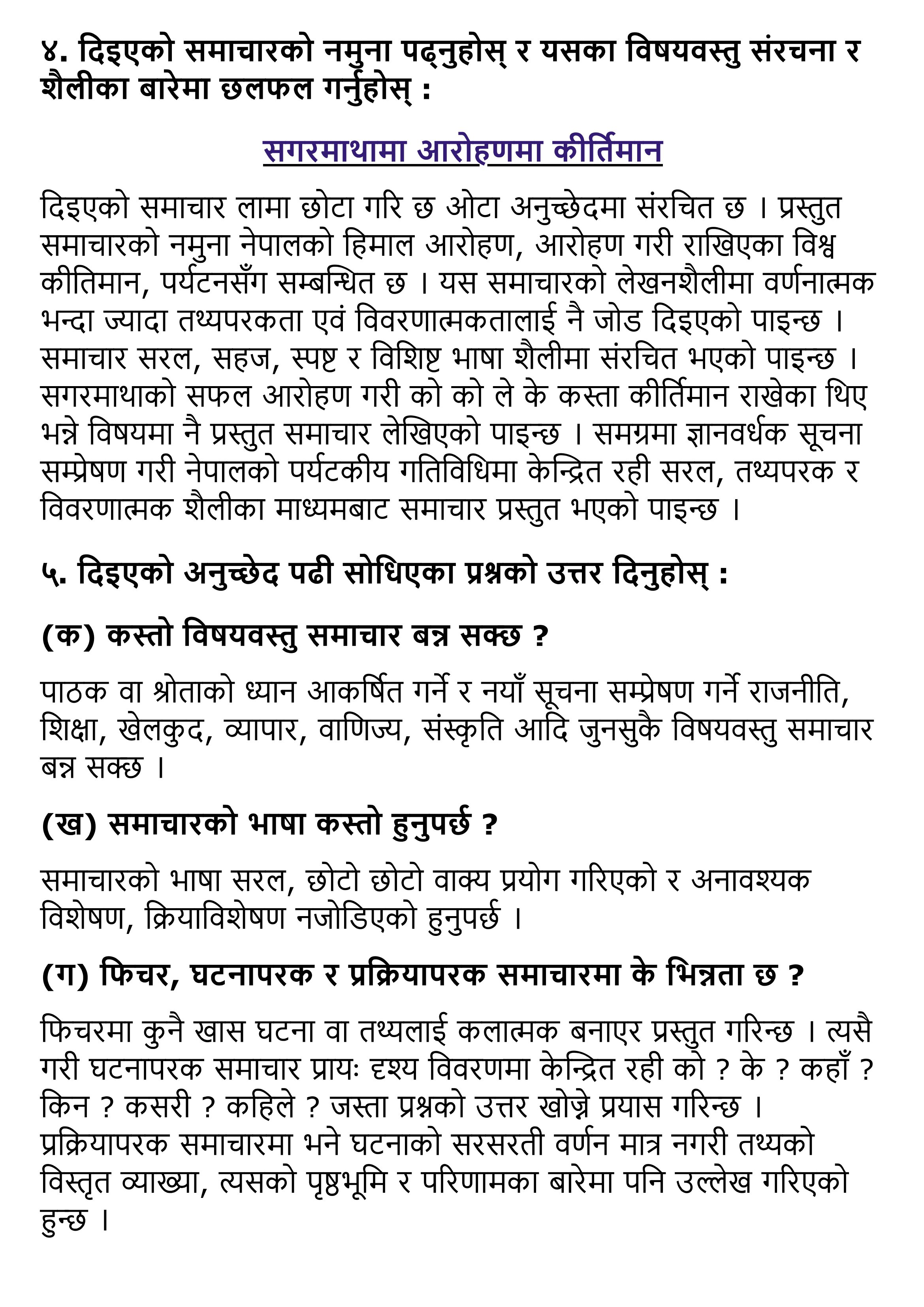


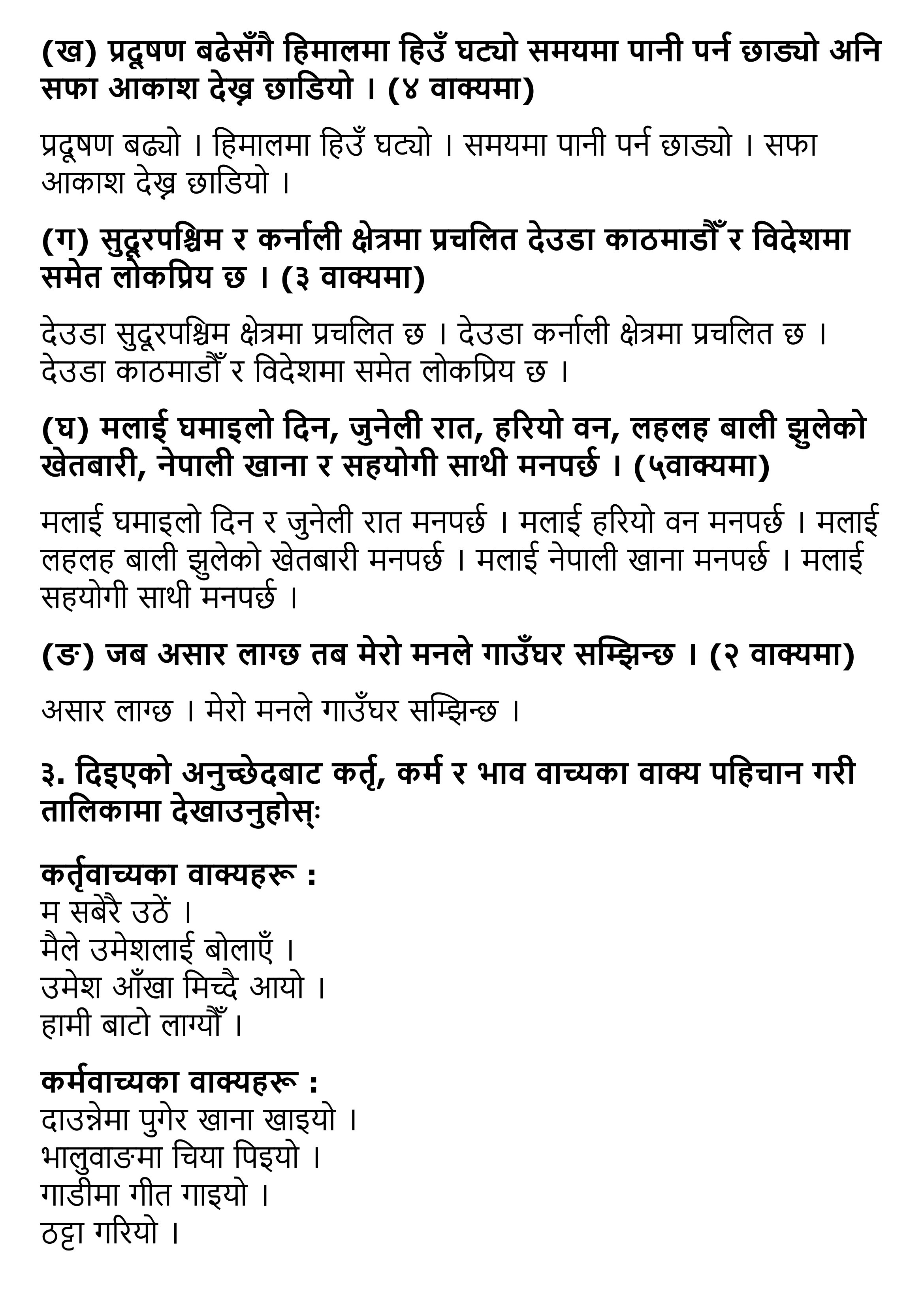
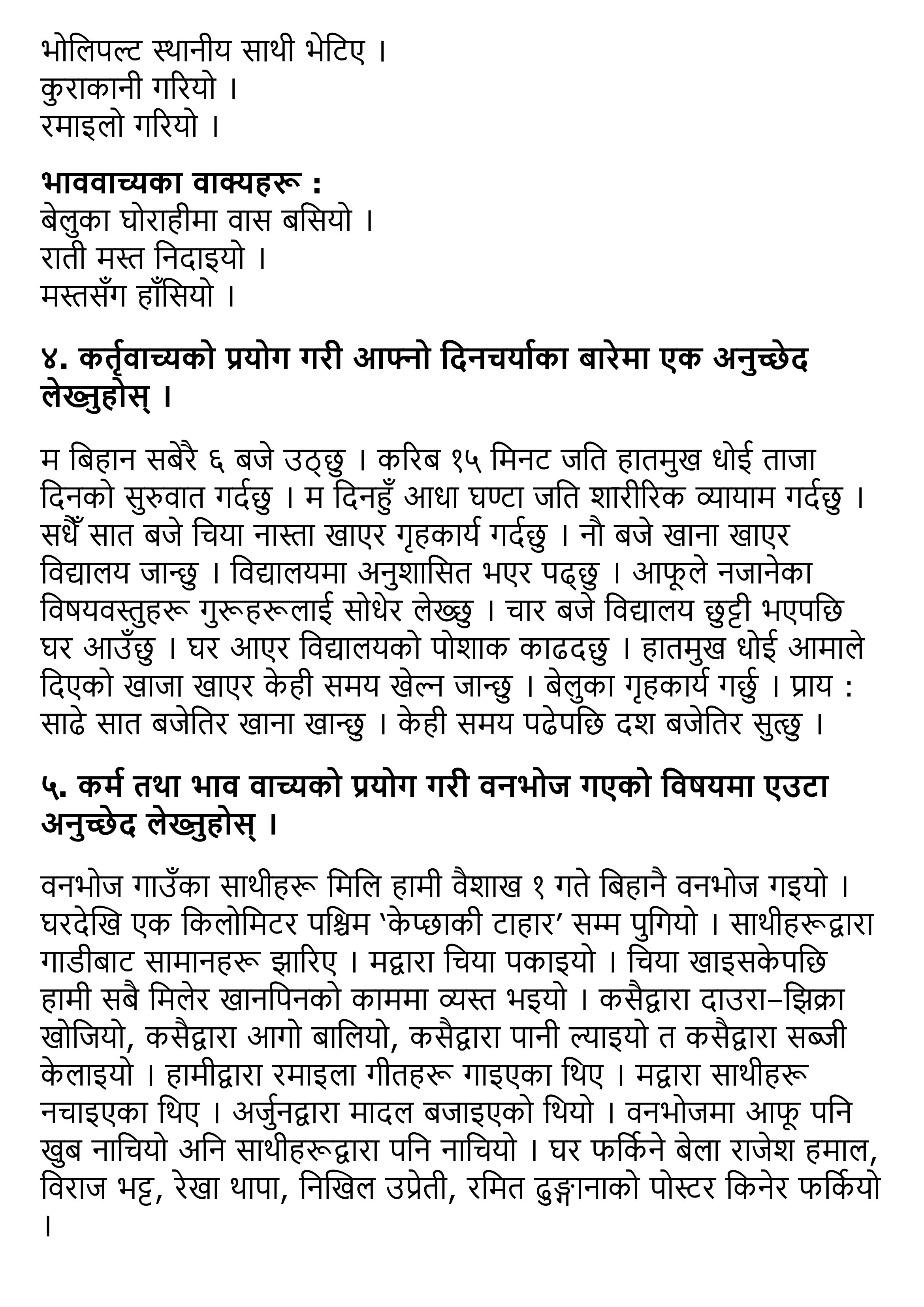

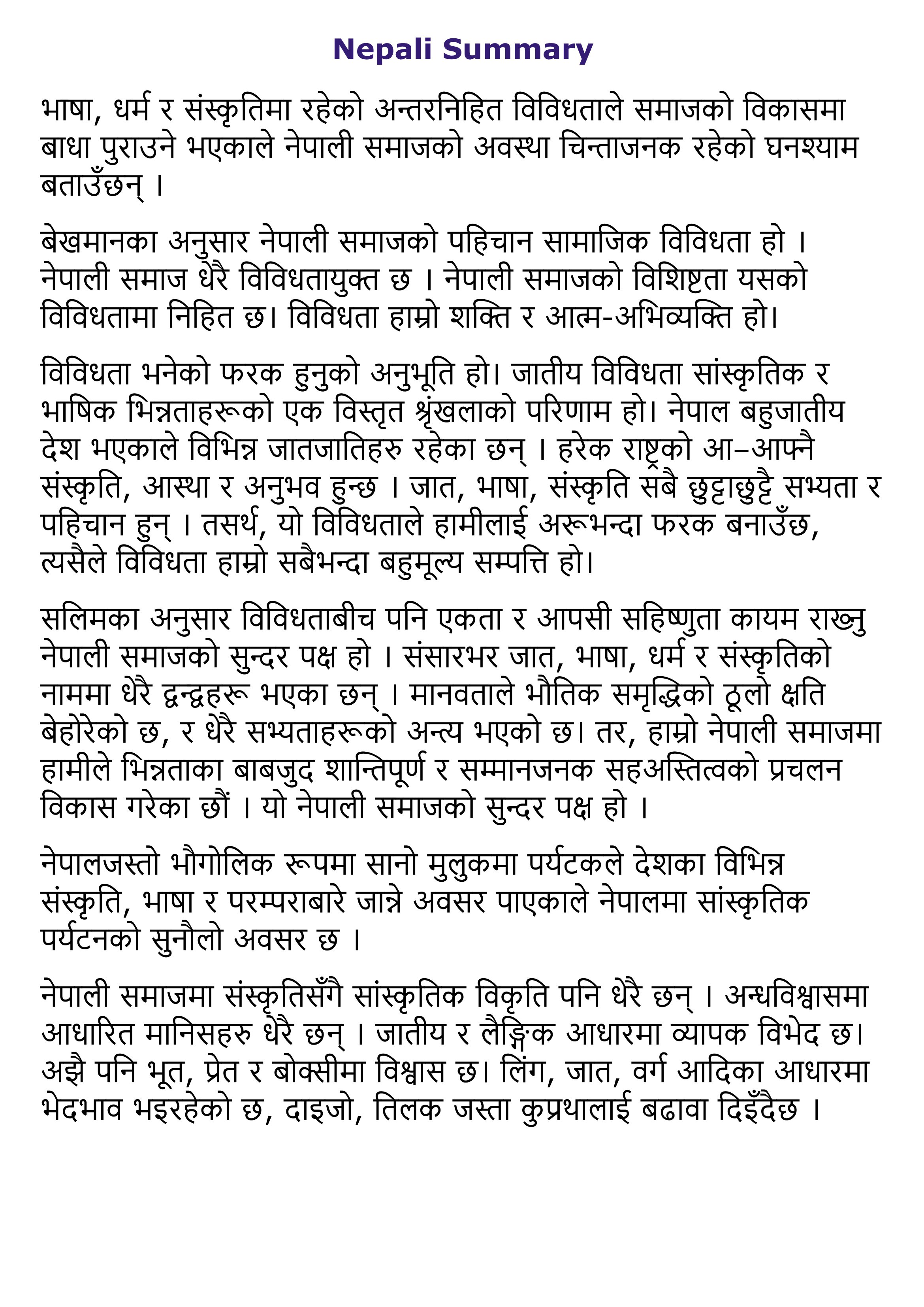
English Summary
According to Ghanshyam, the situation of Nepali society is worrying because the inherent diversity in language, religion and culture will hinder the development of the society.
According to Bekhman, the identity of Nepali society is social diversity. Nepali society is very diverse. The uniqueness of Nepali society lies in its diversity. Diversity is our strength and self-expression.
Diversity is the feeling of being different. Ethnic diversity results from a wide range of cultural and linguistic differences. As Nepal is a multi-ethnic country, there are different ethnic groups. Every nation has its own culture, belief and experience. Caste, language, culture are all separate civilizations and identities. Therefore, this diversity is what makes us different from others, so diversity is our most valuable asset.
According to Salim, maintaining unity and mutual tolerance even among diversity is a beautiful aspect of Nepali society. There have been many conflicts in the name of caste, language, religion and culture all over the world. Humanity has suffered a great loss of material prosperity, and many civilizations have come to an end. However, in our Nepalese society, we have developed the practice of peaceful and respectful coexistence despite our differences. This is a beautiful aspect of Nepali society.
In a geographically small country like Nepal, there is a golden opportunity for cultural tourism in Nepal as tourists have the opportunity to learn about the different cultures, languages and traditions of the country.
Along with culture, there are many cultural distortions in Nepali society. There are many people based on superstitions. There is wide discrimination on the basis of caste and gender. Still believe in ghosts, ghosts and witches. There is discrimination on the basis of sex, caste, class, class etc. Bad practices like dowry and tilak are being promoted.
Read More
Keywords
- Nepali Pahichan Exercise
- Nepali Exercise Chapter 10
- Class 12 Nepali
- Class 12 Nepali Pahichan Exercise
Other Chapter Notes
- Chapter 1: Aamako Sapana
- Chapter 2: Birahini Damayanti
- Chapter 3: Ghanaghasya ko ukalo katda
- Chapter 4: Byabasayik Patra
- Chapter 5: Ek chihan
- Chapter 6: Stephen William Hawking
- Chapter 7: Hamilai bolauchan Himchuli
- Chapter 8: Matritwo
- Chapter 9: Gorkhe
- Chapter 10: Nepali Pahichan
- Chapter 11: Sahakari
- Chapter 12: Jiban Marga
Frequency Asked Questions ( FAQs)
